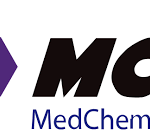(Leu31,Pro34)-Peptide YY (human) (TFA)-5 mg

Description
(Leu31,Pro34)-Peptide YY (human) (TFA) is the TFA form of (Leu31,Pro34)-Peptide YY (human) (HY-P3877). (Leu31,Pro34)-Peptide YY (human) (TFA) is a Peptide YY (HY-P1514) derivative and is a potent and selective Y1 agonist with a KD of 1.0 nM[1].–80°C, 2 years; -20°C, 1 year (Powder, sealed storage, away from moisture and light, under nitrogen)—-C195H296N54O56.xC2HF3O2—-[1]Dumont Y, et al. Peptide YY derivatives as selective neuropeptide Y/peptide YY Y1 and Y2 agonists devoided of activity for the Y3 receptor sub-type. Brain Res Mol Brain Res. 1994 Oct;26(1-2):320-4.—-4292.75 (free base)–99.96–O=C(N1[C@@H](CCC1)C(N[C@@H]([C@@H](C)CC)C(N[C@@H](CCCCN)C(N2[C@@H](CCC2)C(N[C@@H](CCC(O)=O)C(N[C@@H](C)C(N3[C@@H](CCC3)C(NCC(N[C@@H](CCC(O)=O)C(N[C@@H](CC(O)=O)C(N[C@@H](C)C(N[C@@H](CO)C(N4[C@@H](CCC4)C(N[C@@H](CCC(O)=O)C(N[C@@H](CCC(O)=O)C(N[C@@H](CC(C)C)C(N[C@@H](CC(N)=O)C(N[C@@H](CCCNC(N)=N)C(N[C@@H](CC5=CC=C(C=C5)O)C(N[C@@H](CC6=CC=C(C=C6)O)C(N[C@@H](C)C(N[C@@H](CO)C(N[C@@H](CC(C)C)C(N[C@@H](CCCNC(N)=N)C(N[C@@H](CC7=CNC=N7)C(N[C@@H](CC8=CC=C(C=C8)O)C(N[C@@H](CC(C)C)C(N[C@@H](CC(N)=O)C(N[C@@H](CC(C)C)C(N[C@@H](CC(C)C)C(N[C@@H]([C@H](O)C)C(N[C@@H](CCCNC(N)=N)C(N9[C@@H](CCC9)C(N[C@@H](CCCNC(N)=N)C(N[C@@H](CC=CC=C(C=C)O)C(N)=O)=O)=O)=O)=O)=O)=O)=O)=O)=O)=O)=O)=O)=O)=O)=O)=O)=O)=O)=O)=O)=O)=O)=O)=O)=O)=O)=O)=O)=O)=O)=O)=O)=O)=O)[C@H](CC=CC=C(C=C)O)N.xO=C(O)C(F)(F)F–Neurological Disease–H2O : 100 mg/mL (ultrasonic)–Neuropeptide Y Receptor–NPY Y1 receptor;NPY Y2 receptor–GPCR/G Protein;Neuronal Signaling–Peptides



 Did you check our products for animal nutrition?
Did you check our products for animal nutrition? 